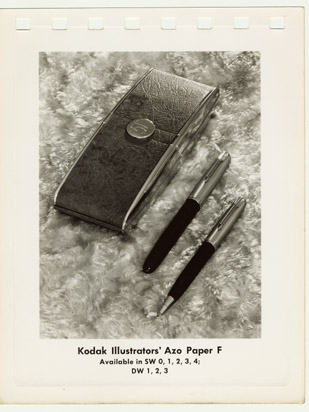

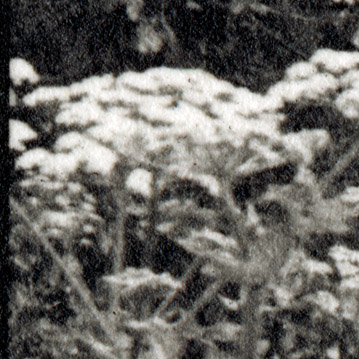
I ♥ Emulsion
| Previous | Emulsion Home | Next |
|
I need to start this with another Note from the Pulpit. My dear friend Phil Schary died last month. A wildfire cancer took him just as he and his wife were poised to enjoy their elder years. Phil was a scholar, teacher, mentor, friend, and photographer. He shared willingly and openly everything he knew (and that was much) but even more important, he was the best question-asker I've ever known. Phil could look at the past and toward the future simultaneously and see the bridge. In photography, he examined each new thing that came along, be it innovation or revolution, and gave it honest consideration. He still loved the darkroom, but was excited about the potential of digital. He saw the continuity. And now he is gone. Emulsion making and research started out as a hobbyist's occupation. Reading the old literature, you can sense the excitement. They shared openly and gave credit freely. By 1900, give or take a few years, the literature dried up. In 1929, E. J. Wall wrote in Photographic Emulsions, "There is nothing in the literature upon the subject (photographic emulsions) which helps one much when undertaking this sort of research work. Practically all the knowledge is secreted in the great factories. The worker at this point stands practically in the position of the man who first discovered emulsion photography, and he must battle his way through and pull himself up until he has acquired a knowledge equal to what is known at the present day. This is far from a simple matter, but once I set to the task it proved tremendously fascinating.'' We are today in the same place as Wall in 1929, but we are losing the people who can 'see the bridge'. If this research is allowed to languish much longer, the darkrooms will be gone. Yes, there will still be beautiful black and white photographs hanging in museums (or more likely, in private collections) and there will even be old darkroom technique books left to buy used, but the intimate, casual experience of working the materials will be gone. The bridge burned. Time's a wasting and secrets and egos are an unaffordable indulgence. 'I♥' is a Cl-Br-I emulsion. The cooking procedure is derived from an Azo-like paper recipe developed by Ron Mowrey and taught at a workshop last year. I was dissatisfied with that original recipe and worked for six months changing one thing at a time until there is very little similarity between 'I ♥' and Ron's recipe. Ron's procedure has an innovative step that he devised which works well and that I haven't tried to change. Because of that one step, Ron is claiming copyright secrecy rights and doesn't want me to share my recipe until he decides whether or not he wants to write a book. The attitude is pure George Eastman and understandable on a certain level, but it is an attitude that is antithetical to my life's philosophy. Secrets make no contribution. Here's to Ron's book. He has so much to offer. I can't come close to his chemical engineering knowledge, but I do have a lifetime of darkroom experience and a year of emulsion research I can share. On January 1, 2008, (note: this date has beenchanged to February 1) I will publish on this website, under the philosophy of Open Source, everything I have learned about emulsion making. In addition, I will offer workshops to anyone who wants hands-on education. Hopefully, Ron will continue to offer workshops. As different people learn and contribute to the body of knowledge, perhaps together we can rebuild the craft and science of handcrafted silver gelatin emulsion.
|
July 27, 2007
I was planning on spending the week on gum-overs, but the batch of emulsion I made was particularly pretty so I decided instead to use it on the black and white portfolio.
I'm getting a feel for I
♥, and the comparison to baking is more than an analogy. I bake bread. It's been a long time since I really blew a loaf. I usually remember all the ingredients and add them in the right amount and order, but for no reason I've ever been able to identify, each loaf is an individual. Most of the time they're perfectly fine - nothing you'd be embarrassed to serve. But, every once in a while, there's the loaf that you wish you could throw a party for. This was party emulsion and I suspect it'll happen about as often as party bread.I've been thinking of emulsion (at least I♥) as coming in three varieties: Crap, Fairydust, and Full Monty. It's been awhile since I made Crap. That was mostly a question of getting the surfactant right and taking temperature control seriously. My goal has been reliable Full Monty. That's what I want when I print foggy landscapes or other high key images. No peppering at all. Fairydust is the stuff that has microscopic peppering (literally, visible only through a microscope) with the very rare visible black grain. I haven't considered it a big issue. I just keep out the 'busy' negatives for it and save the foggy images for Full Monty.
What's interesting is that this week's particularly pretty emulsion is a Fairydust batch. The highlights have a life of their own and the blacks are deep and lustrous, but there's no mistaking the microscopic peppering (silver halide grain aggregates that are black upon development even without being exposed to light). I have a few theories I want to work through in the next couple of months, but making a little more progress understanding gum is the first order of business.
A certain amount of control over any process is a satisfying - and necessary - thing, but I wonder if a need for too much control, with the goal of the handmade product indistinguishable from a commercial one, is exactly the wrong approach to take. It changes the goal line from creative control to perfection and is strangely at odds with the attitude that digital, for example, is "too perfect".
| Addendum: July 29: I got curious enough to look at old Kodak paper samples through a microscope. I don't know for sure the date of the paper sample book, but from the look of the models, I'd guess mid-to late 1940's. From the left: 1) a 100% scan of Azo paper, glossy, 2) a half-inch square section of the Azo, enlarged 1000%, and 3) a half-inch square section of "Secret Garden" enlarged 1000%. The microscopic peppering is visible in the enlargements. | ||
 |
 |
 |
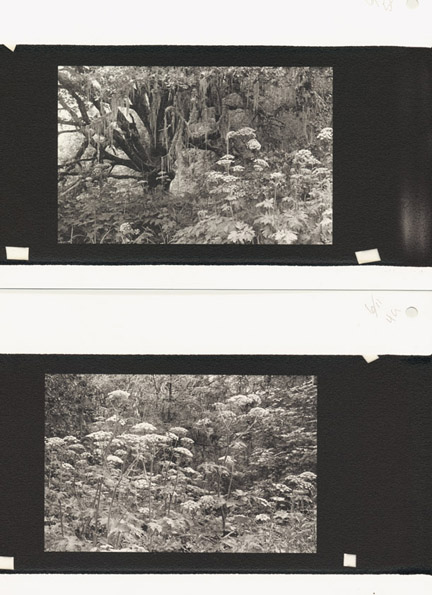 |
Making Joined Diptychs: I scan 120 film 6 x 17cm negatives on a Nikon Coolscan 9000. Since it only scans up to 6x9, I scan in two slightly overlapping passes and make two separate negatives and prints. |
| Trim the prints to approximate the visual overlap, leaving a black border on one half only. Run a line of charcoal gray watercolor crayon (Caran d'Ache Neocolor II) along the cut edges, taking care to not get any on the print surface. (Note: My flat bed scanner isn't long enough to get both prints before they're joined and trimmed.) |
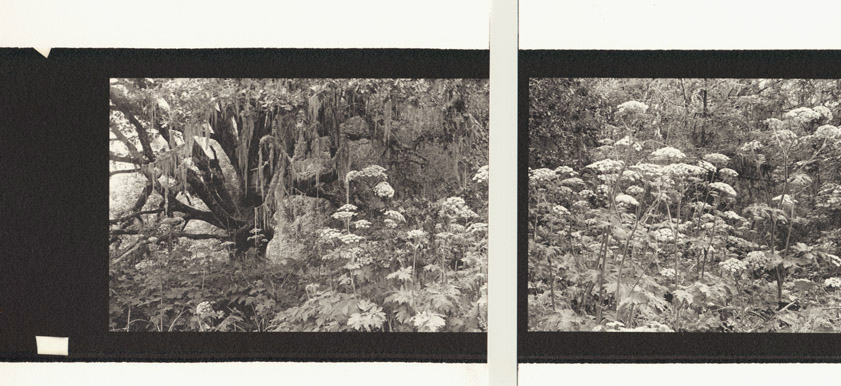 |
|
Using Scotch Positionable Mounting Adhesive, join the edges on a sheet
of 4-ply mat board. Trim and/or mat. |
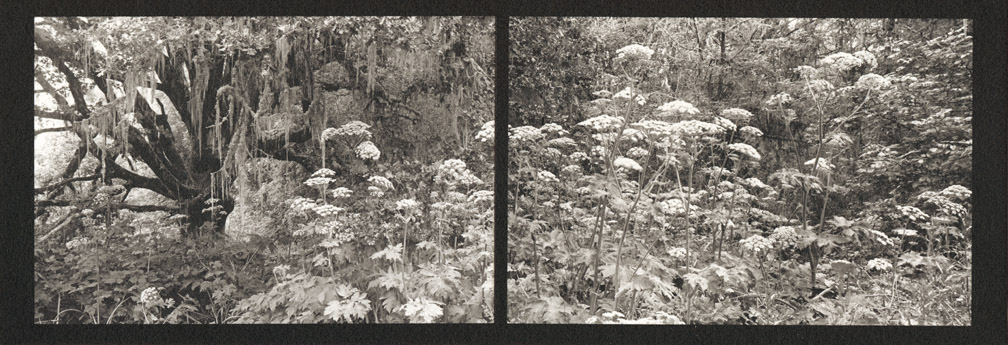 |
| For a closer look go here | ||
 |
 |
 |
 |
 |
 |
| Previous | Emulsion Home | Next |